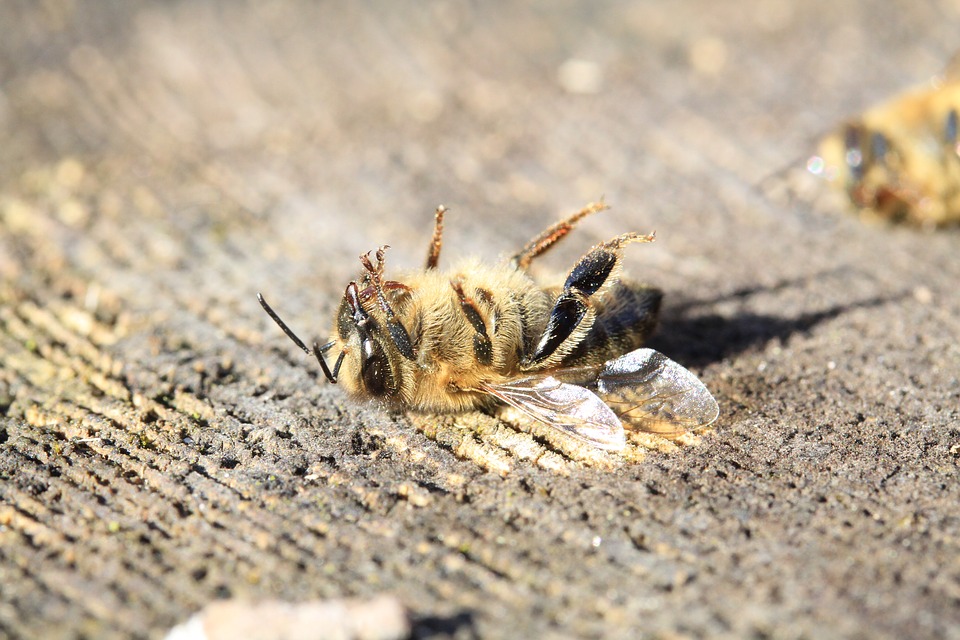30
Jan
Croplands’ Toxicity to Pollinators Has Skyrocketed Since the Turn of the Century
 (Beyond Pesticides, January 28, 2020) The practice of coating seeds with insecticides, now widely adopted as a result of the agrichemical industry, has created increasingly toxic conditions for pollinators foraging on US cropland, finds a study published in Scientific Reports by Penn State University scientists. The data finds that even as overall volume of insecticide use has decreased, the total “bee toxic load” – a term branded by researchers – has increased markedly due in large part to the use of hazardous seed coatings. The switch from one toxic chemical to another is indicative of a chemically-driven agricultural system that, in order to reverse insect, pollinator and bird declines, must undergo rapid changes over the next several decades.
(Beyond Pesticides, January 28, 2020) The practice of coating seeds with insecticides, now widely adopted as a result of the agrichemical industry, has created increasingly toxic conditions for pollinators foraging on US cropland, finds a study published in Scientific Reports by Penn State University scientists. The data finds that even as overall volume of insecticide use has decreased, the total “bee toxic load” – a term branded by researchers – has increased markedly due in large part to the use of hazardous seed coatings. The switch from one toxic chemical to another is indicative of a chemically-driven agricultural system that, in order to reverse insect, pollinator and bird declines, must undergo rapid changes over the next several decades.
Researchers used information from multiple US databases to determine regional patterns in pesticide use and corresponding toxicity loads to pollinators. Thus the term “bee toxic load” was determined by combining the area of land where insecticides were applied with the total toxicity of the particular insecticide used. To compare the impact of changes in the mode of action of the insecticides used, toxicity data was separated between oral and contact toxicity.
Findings indicate that from 1997-2012, contact bee toxic load remained steady, while oral bee toxic load increased nine times, despite significant declines in the overall weight of insecticides applied during that time period. This is reflective of the changing approach within chemical farming over the past few decades. While organophosphates, a class of highly toxic contact insecticides, are falling out of use either as a result of regulatory restrictions or shifting economic incentives, neonicotinoids, well known for their adverse impact to pollinators, are being applied in their place.
The most frequent use of neonicotinoids, systemic insecticides that make their way into the pollen, nectar, and dew drops a plant produces, is in the form of seed treatments. Honeybees and other pollinators come in to contact with these poisons primarily through oral contact in nectar and pollen.
As the study finds, between the period of 1997-2012, oral potency of insecticides increased by 16 times, while application rates declined 64%. At the same time, the fraction of U.S. cropland using insecticides increased 78%, from 15% in 1997 to 26% in 2012.
“This dramatic increase in oral-based toxic load is connected to a shift toward widespread use of neonicotinoid insecticides, which are unusually toxic to bees when they are ingested,” said study coauthor Maggie Douglas, PhD.
The trend is particularly pronounced in the U.S. Midwest. According to the study, the widespread use of neonicotinoid seed treatments increased oral bee toxic load by 121 times. Worse yet, there is little to no evidence that these seed treatments are actually managing pest problems.
“Several studies have shown that these seed treatments have negligible benefits for most crops in most regions,” said study coauthor Christina Grozinger, PhD. “Unfortunately, growers often don’t have the option to purchase seeds without these treatments; they don’t have choices in how to manage their crops.”
This research, like a similar study on overall pesticide toxicity published last year in PLOS One, provides an important touchstone that highlights well-known problems with the current pesticide regulatory system. However, acute toxicity, either through oral or direct contact, is only one part of the equation. Honey bees and other pollinators also suffer from chronic exposure to these persistent insecticides. Neonicotinoids are well- known for chronic impacts that lead to reproductive damage, impaired mobility and navigation, as well as difficulty with feeding, foraging, memory, and learning. Certain wild species, such as ground nesting bees, are at significant risk of chronic impacts, which studies have already linked to adverse impacts on size, development into adulthood, and longevity.
The only way to reject the chemical farming paradigm that repeatedly cycles through one toxic chemical after another, as they are found to be hazardous andor lack efficacy because of insect resistance, is to (i) support organic systems that rejects this approach, and (ii) promote policies that invest in alternatives. Buy organic whenever possible, and reach out to your member of Congress and urge them to support HR1337, Saving America’s Pollinators Act. For more information on the dangers of neonicotinoid coated seeds, see Beyond Pesticides’ short video Seeds That Poison.
All unattributed positions and opinions in this piece are those of Beyond Pesticides.
Source: Penn State University press release, Scientific Reports










